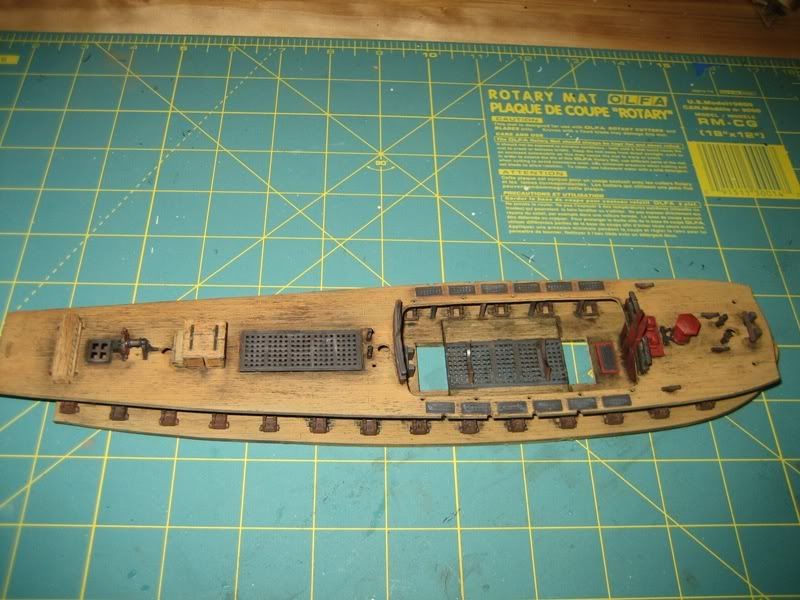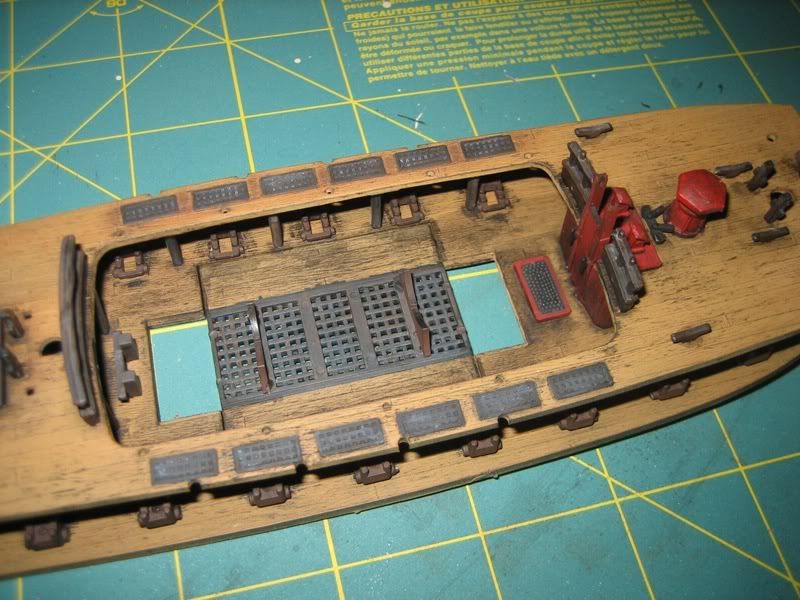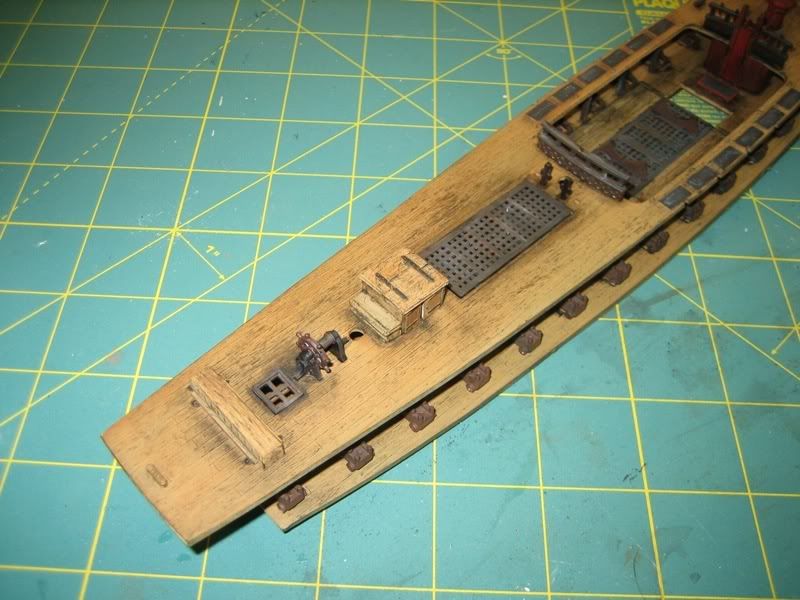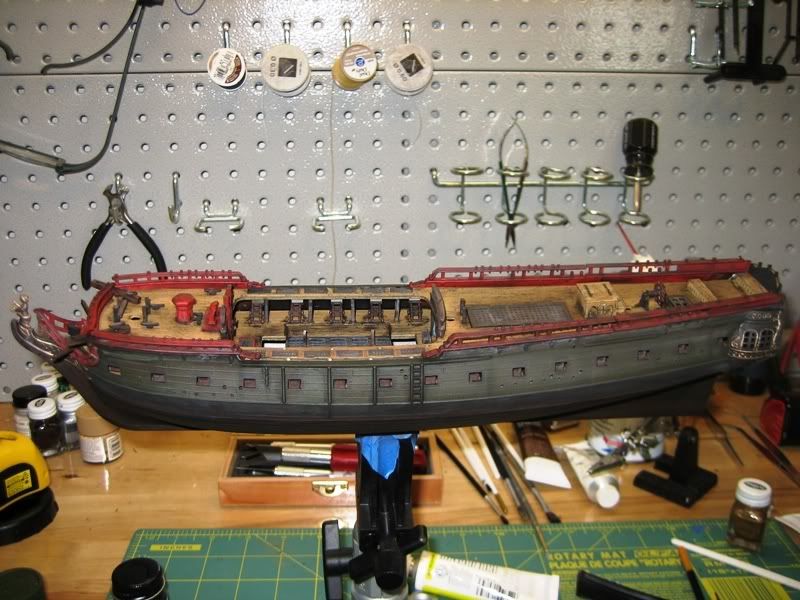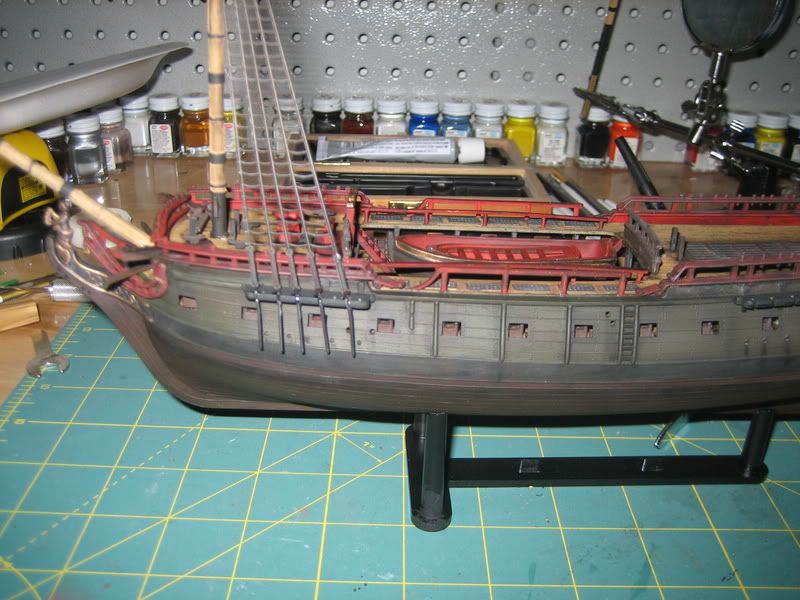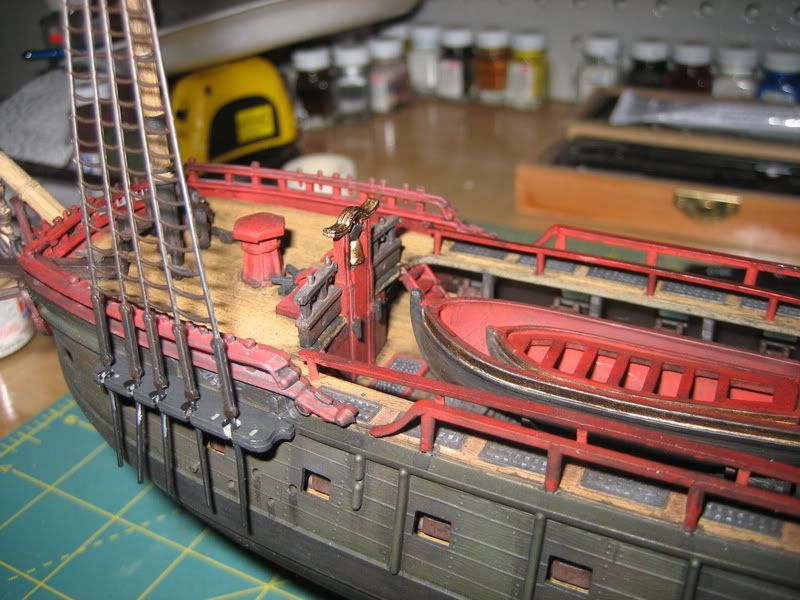Well, although there was certainly a fair bit of overlap, privateers (especially the later ones) were NOT necessarily pirates, but businessmen. The ships were often owned by a consortium, and they hired the very best captain they could find. And certainly, the crews on privateers (especially a very large privateer as your model suggests) were often the best seamen to be found anywhere ('cuz there was a LOT more money to be had on a privateer, and if you could dodge the press-gang to get on board, you could make a big wedge of cash!), and of course, the more efficiently a warship operates, the better its chances of finding and subduing valuable prey… No prey, no pay!
As for the French Navy, while there were certainly problems with the revolutionary navy, the problems of filth and hygiene on French ships goes back much further, with particularly bad examples during the French and Indian War (Seven Years War). One one occasion in 1757, a fleet sent from France under Bois de la Motte to relieve the great fortress of Louisbourg in Canada consisting of 19 ships of the line and several frigates arrived at Louisbourg in three squadrons. Unfortunately, one of the squadrons had first made a stopover in the Caribbean and besides being racked with scurvy, yellow fever and other tropical problems, also picked up a Typhus epidemic, which not only spread to the rest of the fleet, but got on shore as well. In a matter of days, 400 of de la Motte’s crewmen were dead, another 1,200 sick, and the squadron was forced to return to France. On arrival in Brest, the epeidemic spread to the town, and over 5,000 civilians also died as a result, but the epidemic didn’t stop there, as it was then spread to Rochefort and the surrounding area as well. At the end of the day, nearly half of the 12,000 irreplaceable officers and crew that had sailed to Canada died of the disease, which is spread exclusively by lice, which should give you some idea of the state of things aboard the French ships!
While the British Navy also had its periodic problems with disease, the scientific efforts to deal with problems like scurvy and other diseases reaped enormous benefits. One ritual for all new men reporting aboard was for all their clothes to be stripped and destroyed, and the men washed down on the fo’c’sles by the bosun and his mates (and you can bet it was a pretty rough scrub too!). This, plus weekly inspections and cleaning of the crewmen and their gear, daily washdown and scrubbing of the ship kept things remarkably clean, and in many ways, living aboard a British man o’ war could be considered far healthier than remaining ashore just about anywhere… The nascent US Navy picked up many of its traditions and ‘modus operandi’ from the British Navy, with equally gratifying results (the Spanish Navy STILL hadn’t figured out how to deal with scurvy until the end of the Napoleonic war!!)
Another thing to note; given the level of filth aboard French ships, it should come as no surprise to find out that one of the standard British practices on the capture of a French ship was to deliberately sink the vessel at the first opportunity, leave it on the bottom for a few days, then raise it and pump it out and scrub it from stem to stern (thus destroying all the resident vermin…).
